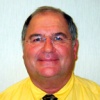Rapid prototyping uses a “Star Wars version” of cross-laser 3-D beams, CAT scan, stereotyping and body parts (even skin). After obtaining the necessary data, all these pieces are put together, entering a machine which generates the 3-D information. The complete information can then build new parts out of titanium, chromium, copper, brass, carbonates, polycarbonates, plastic, wax, nylon, paper and the list goes on. This type of procedure is presently being done in Belgium, Scotland, Korea and the United States.
It was my pleasure to attend the medical division of a rapid prototyping seminar in Detroit, Michigan last month. The guest speakers, a consortium of bioengineers, were:
- Andy Christensen of Golden, Colorado, recognized for his work building the pre-surgery models of 20 conjoined twins as seen on the Discovery Channel.
- Dr. Oren Tepper of NYU ER Hospital, recognized for 3-D laser breast reconstruction augmentation.
- Dr. Steve Schmitt, DDS, MS, recognized for micron dental jaw facial reconstruction.
- Vladimir Mironov, MD, PhD of the University of Southern California, bioprinter research center for organ printing.
- Sung-Hoon, AhV of Nation University of Seoul, South Korea, recognized for nano composite biomechanical depositing.
- Michael Raphel, recognized for 3-D scanning reverse engineering.
I was fortunate to attend all of these courses in a fast-paced schedule of nine hours per day. I was at this seminar because I had successfully incorporated a CAT scan—which views the cervical spine and directs the scan to be converted to a tangible 3-D model. The Belgium computer group helped me with this conversion, which was then reconstructed and built with the cooperation of Caterpillar, Inc. This virgin test worked, which means that if damage is found in the cervical spine, an identical solid model can be made to demonstrate a subluxation or any other abnormality.
These doctors and professors left me spellbound with their intelligence and passion in taking the time to speak with me. Also present in one of those classes was a gentleman who was the head of the radiology department at Walter Reed Hospital. This was in the class instructed by Michael Raphel, who designed the prosthesis for Bob Woodruff, a reporter covering the Iraq war. Woodruff, as you may recall, was involved in an explosion that removed part of his skull.
The wisdom in that room was defining and further motivated my desire to improve my techniques. There is even the possibility of a vertebrae being identically replaced—it could be built out of titanium and have a low oxygen content to identically match the weakened vertebra that would be released. And the body is willing to accept the prototype.
I am looking forward to doing more work with these folks, as I believe these ideas have a certain benefit to mankind. I hope to share further successes that have decreased human handicapped situations. IBI

